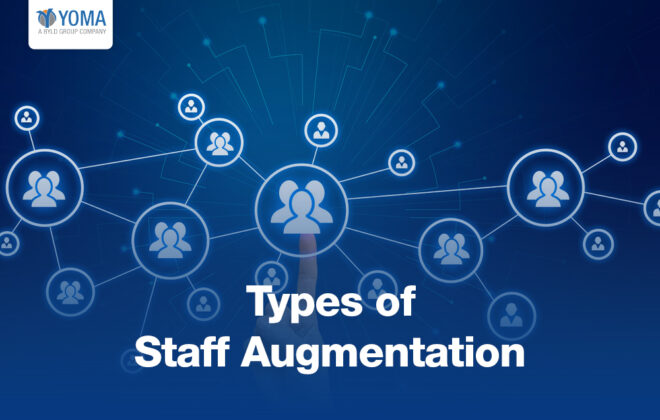
Quick Guide to an Effective Recruitment Process

Article Content
What is the Recruitment Process?
The formal definition of the Recruitment Process would mean a well-planned sequence of actions from creating job descriptions to issuing offer letters, strategically crafted to draw in evaluation, and an authentic selection process.
But, this process also encompasses recruitment marketing, identifying potential candidates who are not actively job-seeking, leveraging referrals, overseeing candidates’ journeys, fostering teamwork, conducting assessments, using applicant tracking systems, ensuring compliance, and facilitating the onboarding process.
In the ever-evolving landscape of modern business, the process of recruitment has transcended mere hiring to become a strategic endeavor that can shape the trajectory of an organization. Far beyond simply filling job openings, a successful recruitment process is a deliberate and well-thought-out journey aimed at not only attracting and selecting the best candidates but also fostering a seamless integration into the company culture. In this comprehensive guide, we will delve into the intricacies of an effective recruitment process, examining each step with a discerning eye.
Steps for Recruitment and Selection Process
1. Recruitment Marketing: Building Your Brand – Recruitment marketing is the foundation upon which a successful hiring process is built. It involves showcasing your company’s values, culture, and opportunities to potential candidates. Leverage various channels, such as social media, your company website, and industry events, to establish your brand as an attractive employer. By creating compelling narratives about your company’s mission, work environment, and growth prospects, you attract not only candidates but also those who resonate with your company’s ethos.
2. Passive Candidate Search: Tapping into Hidden Gems – Top talent isn’t always actively seeking job opportunities. Actively engaging with passive candidates – those who may not be looking for a job change but could be enticed by the right offer – can yield exceptional results. This involves outreach efforts tailored to pique their interest and demonstrate how your organization can provide a more fulfilling professional journey.
3. Referrals: The Power of Recommendations – Employee referrals are a potent resource in the recruitment process. Encourage your current employees to refer candidates from their networks. Candidates referred by existing employees tend to have a better understanding of your company culture, leading to improved cultural fit and camaraderie within the team.
4. Candidate Experience: A Seamless Journey – The candidate’s experience has a profound impact on your company’s reputation. Every interaction, from the initial contact to the final decision, contributes to the candidate’s perception of your organization. Clear and timely communication, respectful engagement, and well-structured interviews contribute to a positive experience that can set you apart from competitors. Thus, it is very important to provide a seamless Recruitment and Selection process to candidates.
5. Hiring Team Collaboration: Strength in Unity – Successful recruitment is a collaborative effort. HR Outsourcing Company, hiring managers, and other stakeholders must work in harmony to ensure alignment on job requirements, candidate evaluation criteria, and the overall hiring strategy. This collaboration fosters a more holistic and accurate evaluation of candidates, reducing biases and improving the quality of hires.
6. Effective Candidate Evaluation: Going Beyond the Surface – Interviews alone might not provide a complete picture of a candidate’s capabilities. Incorporate assessments, practical tasks, and assignments that simulate real job scenarios. This approach provides a tangible demonstration of a candidate’s skills, allowing you to make a more informed decision.
7. Applicant Tracking: Streamlining the Process – An Applicant Tracking System (ATS) streamlines the selection process by centralizing candidate data, application status, and communication. This technology ensures consistency, simplifies reporting, and helps maintain compliance with hiring regulations.
8. Reporting, Compliance, and Security: Playing by the Rules – Maintaining compliance with legal and ethical standards is paramount. Keep detailed records of the recruitment process, including candidate interactions and decisions. Safeguard sensitive candidate data to uphold their privacy rights.
9. Plug and Play: Being Prepared for New Hires – Once a candidate is selected, the transition from a potential employee to a productive team member should be seamless. Prepare for this phase by having an efficient onboarding process that covers orientation, paperwork, and initial training. A well-structured onboarding experience sets the tone for a successful employee journey.
10. Onboarding and Support: Setting the Stage for Success – Onboarding is more than just paperwork; it’s a pivotal stage for integrating new employees into your company’s culture and operations. Provide a comprehensive introduction to your company’s values, mission, policies, and colleagues. Assign mentors or buddies to offer guidance and ensure a smooth assimilation.
Recruitment and Selection
1. Recruitment Strategy: The Backbone of Successful Hiring
Recruitment Planning – Begin by identifying your company’s hiring needs. Forecast demand and strategically plan your recruitment efforts to ensure a consistent talent pipeline. So that you have a seamless Selection Process.
2. Identifying Vacancy – Clearly define the roles you need to fill and the responsibilities associated with them. A clear understanding of these aspects will guide your recruitment efforts and provide you with an easy Recruitment and Selection of worthy candidates that are a perfect fit for your needs.
3. Job Analysis – Dive deep into the tasks, responsibilities, and required skills for the vacant positions. This analysis forms the basis for crafting compelling job descriptions.
4. Job Description – Craft job descriptions that not only detail the role’s responsibilities but also highlight its significance within the company’s structure. Focus on the impact the role has on the organization.
5. Job Specification – Outline the qualifications, experience, and skills essential for the job. This helps set clear expectations for candidates and aligns the hiring team’s assessment criteria.
6. Job Evaluation – Determine the relative importance of the job within your organization. This evaluation informs compensation decisions and ensures equitable pay structures.
Searching for the Right Candidate: A Strategic Approach
1. Source Activation – Select the most suitable channels to advertise your job openings based on the nature of the role and the target audience. Consider platforms like job boards, social media, and industry-specific networks.
2. Selling – Craft a job description that not only informs candidates about the role but also inspires them to envision themselves as integral parts of your organization. Highlight the unique opportunities your company offers so as to motivate the eligible candidates to apply to you.
3. Screening and Shortlisting: Identifying the Cream of the Crop
Reviewing Resumes and Cover Letters – Go beyond keywords and look for achievements and experiences that align with the job requirements. This step helps you identify candidates with relevant backgrounds.
4. Conducting Telephonic or Virtual Interviews – Initial interviews are crucial for assessing a candidate’s communication skills, attitude, and general fit with the company culture. Use this stage to establish a positive rapport.
5. Shortlisting Candidates – Evaluate candidates based on their alignment with the company’s values, skills, and cultural fit. A narrowed-down pool ensures that your time and resources are invested wisely.
6. Evaluation and Control: Ensuring Quality
Assessment Centers – Employ role-specific tasks and assessments that mirror real-world challenges to gauge a candidate’s practical skills and problem-solving abilities.
7. Background Checks – Verify candidates’ educational and professional credentials, ensuring the accuracy of the information they’ve provided. To keep the Recruitment and Selection Process authentic and accurate.
8. Interview Panels – Include multiple interviewers in the final rounds to gain diverse perspectives on the candidate. This approach ensures a comprehensive evaluation and minimizes biases.
Conclusion
Building Tomorrow’s Success Today
In a world defined by rapid change and innovation, an effective recruitment process is a linchpin for organizational success. By weaving together each aspect of the process – from crafting a compelling recruitment strategy to extending a warm onboarding experience – you’re not just filling vacancies; you’re assembling a team poised to drive your company forward. Embrace the intricacies of recruitment, tailor them to your organization’s unique needs, and witness as your recruitment process transforms into a catalyst for positive growth. With unwavering commitment and a keen understanding of each step’s significance, you’ll unlock the true potential of your recruitment efforts.
Related Posts





